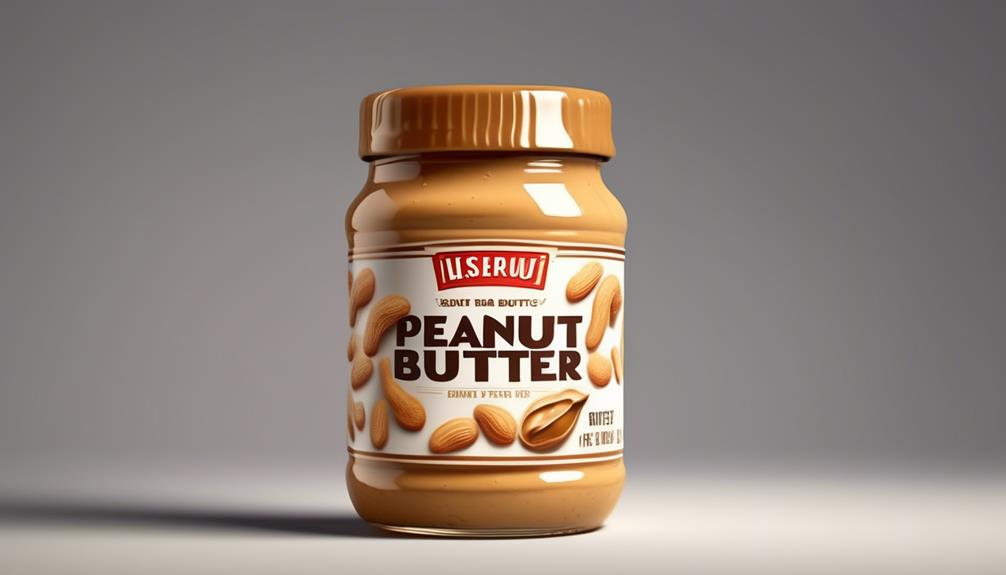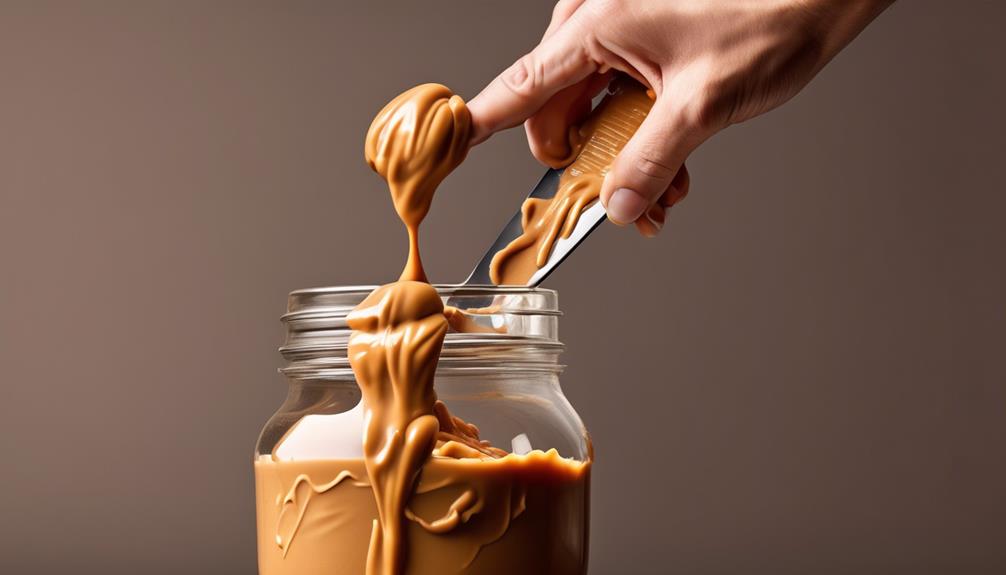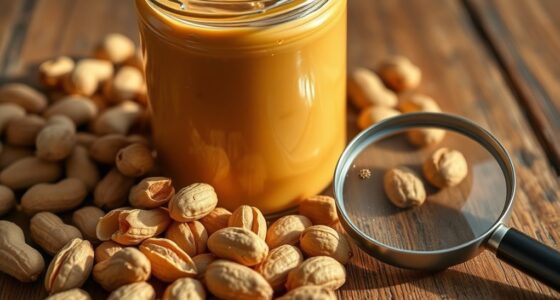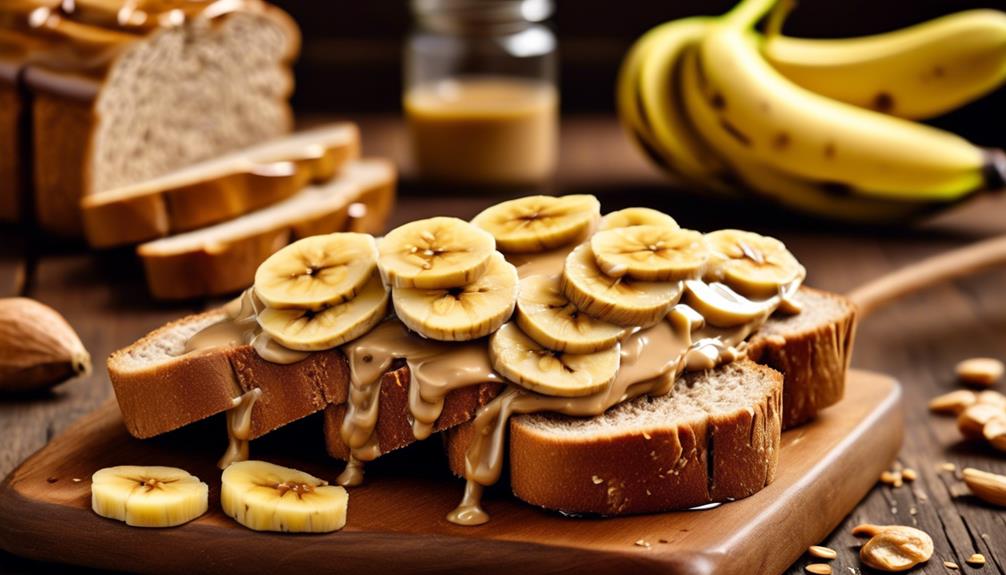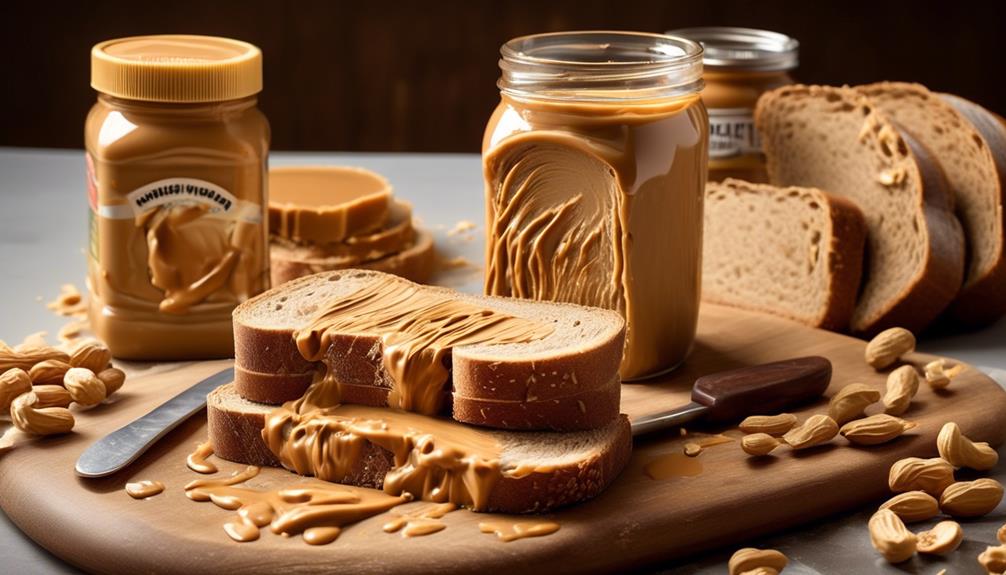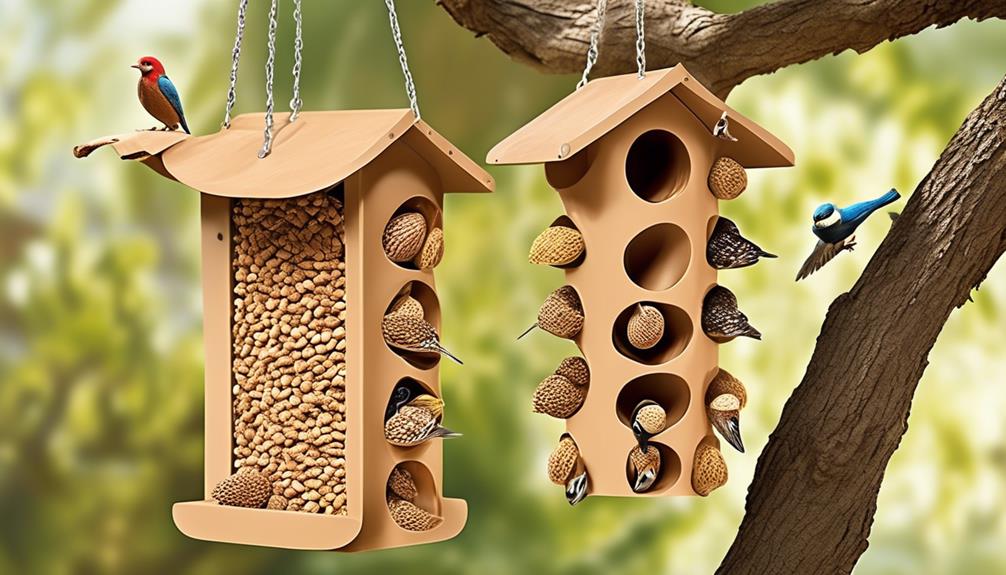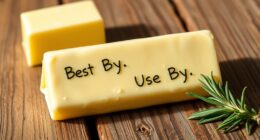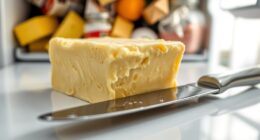We have all come across that mysterious white substance in our peanut butter at some point, and it’s natural to wonder what it is. But have you ever paused to think about why it is there?
Understanding the science behind this phenomenon can shed light on the quality and composition of your peanut butter. So, what really is the white stuff in your peanut butter, and should it be a cause for concern?
Let's uncover the truth behind this common occurrence and explore how it affects the overall experience of enjoying this beloved spread.
Key Takeaways
- The white substance in peanut butter is likely oil separation, which occurs when the natural oils in peanuts separate from the denser peanut solids.
- The white residue in peanut butter is a result of the absence of added stabilizers in natural peanut butter products, and it is caused by palm oil rising to the top.
- The presence of white residue does not indicate spoilage or affect the taste, quality, or safety of the peanut butter.
- To prevent white residue formation, store peanut butter properly, use clean utensils, and consider refrigeration for natural peanut butter.
Identifying the White Substance
When identifying the white substance in peanut butter, it's important to note that it's likely oil separation, a common occurrence in natural peanut butter. This separation happens when the natural oils in the peanuts separate from the denser peanut solids and rise to the top. It's a sign of a high-quality, minimally processed product. The white substance is simply the natural oils that have come to the surface.
To address this, simply stirring the peanut butter thoroughly will reincorporate the oil, restoring its creamy texture and consistency. Another trick is to store the peanut butter upside down, allowing the oil to slowly work its way back through the butter. This can help in maintaining a more consistent texture throughout the jar.
It is crucial for consumers to understand that this separation doesn't indicate spoilage or pose any health risks. In fact, the separated oil can be utilized for cooking, baking, or even as a natural moisturizer for dry skin. Embracing the natural separation in peanut butter can lead to creative culinary uses and reduce waste.
Causes of White Residue

The natural separation of oil in peanut butter, often mistaken for white residue, is a result of the absence of added stabilizers in natural peanut butter products. This separation occurs due to the presence of palm oil, a natural component of peanuts that tends to rise to the top.
The expiration date on natural peanut butter products also plays a role in the occurrence of this separation, as the absence of preservatives allows the oil to separate over time. However, it's important to note that this doesn't indicate spoilage. Instead, it's a natural process and doesn't affect the taste, quality, or safety of the peanut butter.
Preventing White Residue Formation

To prevent the formation of white residue in peanut butter, it's essential to store the product in a cool, dark place and securely seal the jar to maintain its quality.
Peanut butters contain natural oils that can separate and rise to the surface, leading to the development of the white residue. By storing the peanut butter in a cool, dark place, such as a pantry or cupboard, and ensuring the jar is tightly sealed, the risk of oil separation and white residue formation is minimized.
Additionally, it's important to avoid exposing the peanut butter to extreme temperature changes, as fluctuations in temperature can contribute to the development of the white residue. Using a clean utensil each time you scoop out peanut butter is also crucial to prevent cross-contamination and maintain the integrity of the product.
For natural peanut butters, refrigeration can be considered to prolong the shelf life and prevent the separation of oil, which can lead to the formation of white residue.
These practices help to preserve the quality and appearance of peanut butter, ensuring a more enjoyable and long-lasting product.
Quality and Safety Considerations

Storing natural peanut butter in a cool, dark place and ensuring a tight seal on the jar are essential practices to maintain its quality and safety, particularly considering its tendency for oil separation.
When it comes to quality and safety considerations, there are several important points to keep in mind:
- Oil separation in natural peanut butter is a normal occurrence due to the absence of stabilizers, and it doesn't affect the taste or safety of the product.
- Simply stirring the peanut butter to mix the oil back in or storing it upside down can help facilitate the mixing process when oil separation occurs.
- Despite oil separation, natural peanut butter is safe to consume and doesn't pose any health risks.
- Natural peanut butter, containing only peanuts and sometimes salt, is a healthier alternative to processed peanut butter, providing a good source of healthy fats and protein.
- It's important to store natural peanut butter, and other nut butters such as almond butter, in tightly sealed jars to maintain their quality and prevent rancidity of the fatty acids.
These practices ensure that you can enjoy the delicious and nutritious benefits of natural peanut butter while maintaining its quality and safety.
Dealing With White Residue

Observing the natural separation of oil in peanut butter can often lead to the appearance of white residue, which is a common occurrence in natural peanut butter products. Dealing with this white residue is simple and can help maintain the quality and consistency of the peanut butter. Here are some effective ways to handle the white residue in natural nut and seed butters.
| Method | Procedure | Benefits |
|---|---|---|
| Stirring | Use a clean utensil to thoroughly mix the separated oil back into the peanut butter. | Restores creamy consistency. |
| Storing upside down | Store the jar upside down at room temperature to allow the oil to naturally reincorporate into the butter. | Oil mixes back in without stirring. |
| Utilizing the oil | Use the separated oil for cooking, baking, as a natural moisturizer, or in other recipes. | Minimizes waste and adds flavor. |
These methods are simple yet effective in managing the white residue commonly found in natural nut and seed butters. By incorporating these practices, we can maintain the quality and enjoy the natural goodness of our peanut butter.
Frequently Asked Questions
How Can You Tell if Peanut Butter Has Gone Bad?
We can tell if peanut butter has gone bad by checking the expiration date. Looking for visible mold is another way to determine if it has spoiled. Additionally, noticing changes in texture, smell, and taste can also indicate that peanut butter is no longer good to eat.
Fresh peanut butter has a creamy consistency, while spoilage can cause it to become hard and dry. Rancid peanut butter may have a sharp, bitter, or soapy odor. If it tastes unpleasant, it's likely gone bad.
To ensure the quality of your peanut butter, always check the expiration date. Additionally, trust your senses and be on the lookout for any visible mold or changes in texture, smell, and taste.
Is Oil Separation in Peanut Butter Bad?
Oil separation in natural peanut butter isn't bad. It's a sign of natural ingredients and no added stabilizers. The separation doesn't affect taste or safety. Simply stir or store it upside down to restore its creamy texture.
Natural peanut butter, made of peanuts and sometimes salt, is a healthier option. The separated oil can be used for cooking, baking, as a natural moisturizer, or added to smoothies and dressings.
What Is the Slime on the Top of My Peanut Butter?
We've all seen that white stuff on top of our peanut butter, and you might be wondering what it is.
Well, that white layer is just the natural oils from the peanuts separating. It's totally normal, especially in natural peanut butter without added stabilizers.
The good news is that it's harmless and won't affect the taste or quality of your peanut butter. Just give it a good stir, and you'll have creamy peanut butter again in no time.
Can I Pour Out the Oil in Peanut Butter?
We shouldn't pour out the oil in peanut butter as it's a natural part of the product. The oil separation is normal in natural peanut butter due to the absence of stabilizers.
Simply stir the peanut butter to mix the oil back in. If you prefer a more convenient option, store the jar upside down to help the oil mix back in on its own.
This is a common occurrence and doesn't affect the quality of the peanut butter.
Conclusion
In conclusion, the white residue in natural peanut butter is simply the natural oil that has separated from the peanuts. It's nothing to worry about and can easily be mixed back in by stirring or storing the jar upside down.
Just like a smooth blend of flavors, the separation of oil doesn't change the delicious taste or quality of the peanut butter.
So go ahead and enjoy your natural, healthy spread without any concerns.
